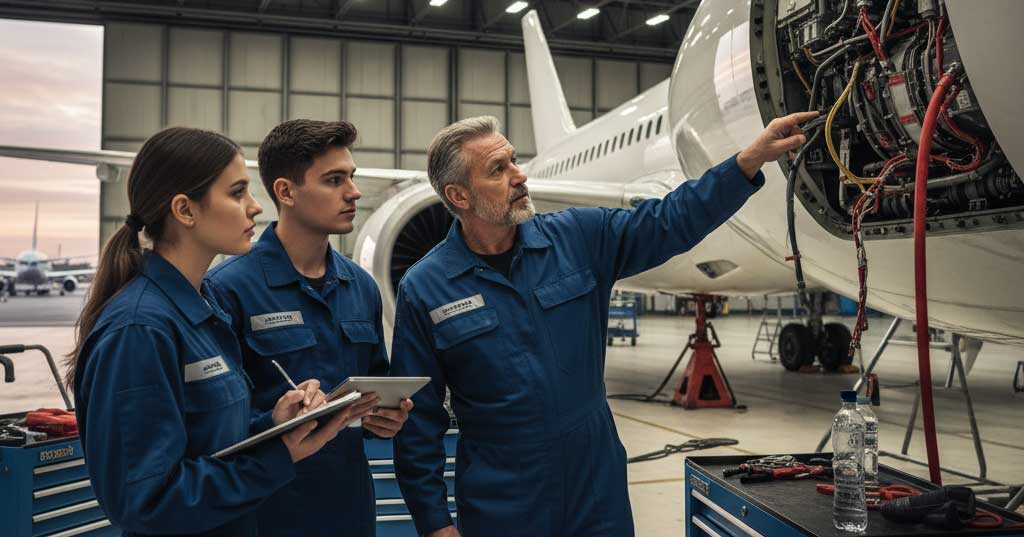What Are the Requirements for an EASA AME License?
To obtain an EASA Aircraft Maintenance Engineer (AME) license, candidates must fulfill specific criteria. Firstly, they are required to complete an approved training program offered by a recognized EASA Part-147 organization, which includes both theoretical knowledge and practical training. In addition to the coursework, candidates must pass a series of module examinations and prove their ability to perform various maintenance tasks competently. Practical experience is also a critical requirement, often involving several years of hands-on work within an EASA-approved maintenance facility. Lastly, candidates must pass an oral assessment conducted by an EASA-authorized examiner in order to be awarded the license.
Educational Prerequisites
Before pursuing an EASA AME license, candidates must fulfill specific educational prerequisites. This usually involves completing secondary education with a strong emphasis on science and mathematics. Additionally, possessing a technical diploma or a degree in engineering or aviation can be highly beneficial. This foundational education plays a vital role in preparing candidates to understand complex aircraft systems and maintenance procedures throughout their training.
Ask ChatGPT
Key Points:
- Completion of high school or an equivalent qualification
- Solid foundation in mathematics
- Strong understanding of physics
- Technical or vocational education in engineering disciplines
- Coursework or knowledge in electronics
- Basic familiarity with aviation principles
- Proficiency in the English language
- Optional but recommended: Associate’s or Bachelor’s degree in a related field
Theoretical Training Requirements
Theoretical training plays a vital role in the process of obtaining an EASA AME license. It encompasses key subjects such as aerodynamics, aircraft systems, avionics, and aviation regulations. Delivered by EASA Part-147 approved training organizations, this coursework is structured to provide a thorough understanding of aircraft maintenance concepts. To qualify, candidates must successfully pass challenging examinations for each module, proving their mastery of the theoretical knowledge essential for carrying out safe and efficient maintenance operations.
Key Points:
- Principles of aerodynamics and flight
- Aircraft systems and their components
- Avionics and electronic systems
- Aircraft materials and associated hardware
- Human factors in aviation maintenance
- EASA rules, regulations, and compliance standards
- Standard maintenance procedures and best practices
- Safety management systems and risk assessment
Practical Training Components
Practical training is a vital part of obtaining an EASA AME license, offering hands-on experience with actual aircraft and maintenance operations. Carried out under the guidance of certified engineers, this training involves tasks such as aircraft inspections, troubleshooting, and repair procedures. Candidates are required to apply their theoretical knowledge in real-world settings, proving their ability to perform maintenance work with precision and safety. This practical exposure is essential for building the competence and confidence necessary for licensing.
Key Points:
- Procedures for aircraft inspection
- Diagnosing faults and troubleshooting issues
- Techniques for repair and component replacement
- Engine servicing and maintenance methods
- Testing and maintenance of avionics systems
- Performing structural repairs on aircraft
- Proper use of maintenance tools and equipment
- Adherence to aviation safety regulations
Examinations and Assessments
Examinations and assessments play a vital role in the process of earning an EASA AME license. Candidates are required to pass a series of written exams that cover essential theoretical subjects such as aircraft systems, maintenance procedures, and safety regulations. Alongside these, practical assessments are conducted to evaluate each candidate’s proficiency in performing real-world maintenance tasks. Together, these evaluations ensure that candidates possess both the in-depth knowledge and hands-on skills needed to maintain aircraft in accordance with strict EASA standards.
Key Points:
- Written examinations on aircraft systems
- Testing of theoretical knowledge in maintenance practices
- Assessments on aviation safety regulations
- Module-wise subject evaluations
- Hands-on practical skills assessments
- Troubleshooting and fault diagnosis tests
- Oral interviews to assess technical understanding
- Competency-based evaluations in real-world scenarios
Medical Fitness Requirements
Medical fitness is an essential requirement for acquiring an EASA AME license. Candidates must meet defined health criteria to ensure they are capable of carrying out maintenance duties safely and efficiently. This involves undergoing periodic medical examinations to evaluate overall health, including physical fitness, vision, and hearing. Sustaining good medical health is vital due to the physically and mentally demanding nature of aircraft maintenance, helping to ensure the safety of both the engineer and the aircraft systems they work on.
Key Points:
- Routine medical evaluations
- Vision assessments for both near and distance clarity
- Hearing capability testing
- Cardiovascular system check-ups
- Assessment of overall physical fitness
- Neurological health examinations
- Confirmation of no history of substance abuse
- Adherence to EASA medical fitness standards
In conclusion, earning an EASA AME license involves a structured and demanding process that combines in-depth education, hands-on practical training, and comprehensive assessments. Candidates must first meet strict educational requirements, then complete approved theoretical and practical instruction, and successfully demonstrate their competence through written, oral, and practical evaluations. Maintaining medical fitness is also essential to ensure engineers can perform their duties safely and effectively. This well-rounded approach guarantees that licensed Aircraft Maintenance Engineers are fully equipped to maintain the highest standards of safety and reliability, playing a critical role in supporting the global aviation industry’s commitment to safe air travel.

